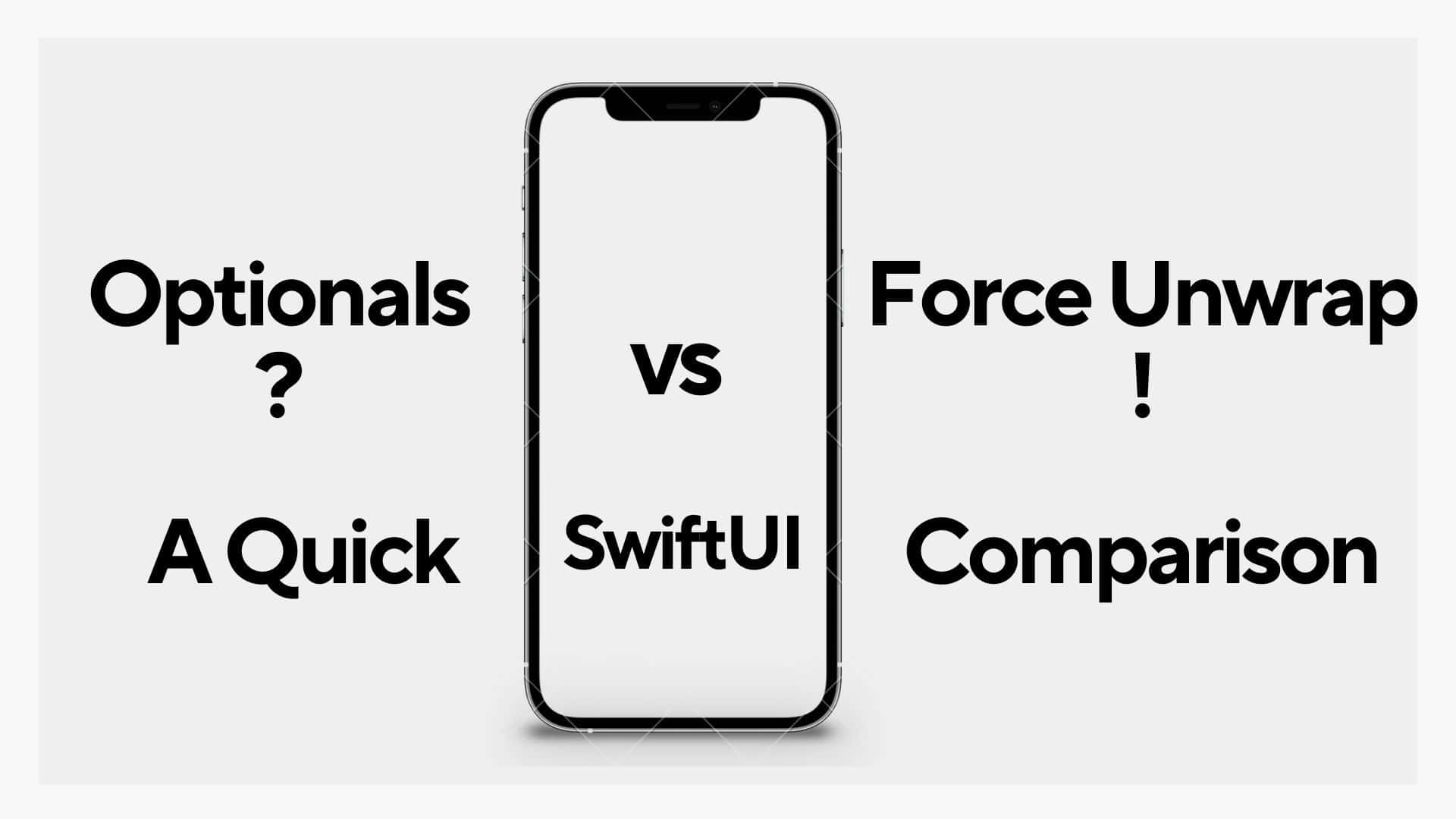Optionals ? vs Force Unwrap ! - SwiftUI
Understand the difference between ? and ! in SwiftUI with simple examples and tips for safer coding.

In Swift and SwiftUI, the question mark (?) and exclamation mark (!) are used to handle optional values, but they have very different meanings and use cases. Here's a detailed explanation to clarify their roles:
Optionals (?)
An optional in Swift indicates that a value may or may not exist. It's a core feature for safely handling the absence of values.
Declaration
You declare a variable or constant as optional by appending a ? to its type:
var name: String? // This variable can hold a String or nilKey Behaviors
Initialization:
By default, an optional is nil unless explicitly assigned a value.
var name: String?
print(name) // Output: nil
name = "Alice"
print(name) // Output: Optional("Alice")Optional Binding:
Use if let or guard let to safely "unwrap" an optional and access its value.
if let unwrappedName = name {
print("Hello, \(unwrappedName)") // Safely accesses the value
} else {
print("Name is nil")
}Optional Chaining:
You can call properties, methods, or subscripts on an optional, and it will return nil if the optional is nil.
let firstLetter = name?.first // Safely gets first letter if name is not nilDefault Values with Nil-Coalescing:
Provide a default value to use if the optional is nil:
let displayName = name ?? "Guest"Forced Unwrapping (!)
The exclamation mark is used to forcefully unwrap an optional, assuming it contains a value. If the optional is nil, it will trigger a runtime crash.
Use Case
- Forced Unwrapping:
Directly access the value of an optional:
var name: String? = "Alice"
print(name!) // Output: Alicename were nil, this would crash your app with a fatal error: Unexpectedly found nil while unwrapping an Optional.Implicitly Unwrapped Optionals:
If you are certain an optional will always have a value after it is initialized, you can declare it with !:
var name: String! = "Alice"
print(name) // No need to unwrap explicitly
However, this is risky and should only be used in specific cases, such as dependency injection or interface builder outlets in UIKit.
When to Use ? vs !
Use ?:
- When a value might be nil, and you want to handle it safely.
- To ensure your app doesn't crash by checking for nil before unwrapping.
Use !:
- When you are 100% certain an optional will have a value at the time of access.
- Typically used for outlets in
@IBOutlet(e.g., SwiftUIUIViewRepresentable).
Example in SwiftUI
Using ? (Safe Handling)
struct ContentView: View {
@State private var name: String? = nil
var body: some View {
VStack {
Text(name ?? "Guest") // Safely use optional with a default value
Button("Set Name") {
name = "Alice"
}
}
}
}Using ! (Risky but Concise)
struct ContentView: View {
@State private var name: String! = nil // Implicitly unwrapped optional
var body: some View {
VStack {
Text(name) // Assumes name is not nil; will crash otherwise
Button("Set Name") {
name = "Alice"
}
}
}
}Best Practices
- Prefer
?over!: Always prioritize safe handling of optionals. Forced unwrapping is best avoided unless absolutely necessary. - Use
!judiciously: Only use it when you are 100% sure the optional will never benilat runtime.